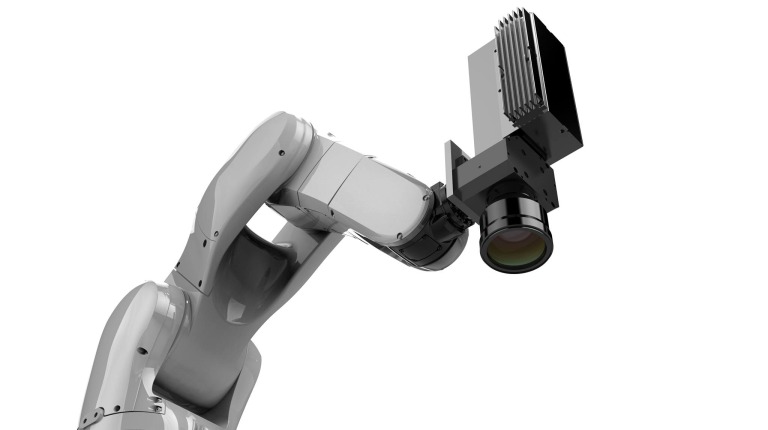XTIA in Japan claims its position as the first company in the world to bring the Nobel Prize winning optical comb technology to industrial measurement applications. XTIA is leveraging its coaxial measurement configuration to measure complex 3D geometries and at very high speeds.
Earlier in 2020 XTIA (previously named Hikari Com Co) raised raised 1.7 billion yen ($16 million) from investors to expand its business. Nikon was the largest investment participant with a 800 million yen investment ($7.6 million). In its note to shareholders Nikon commented “XTIA began as a Tokyo Institute of Technology start-up in 2002, with the goal of applying unique Nobel Prize optical comb technology for industrial applications. In April 2016, it succeeded in developing a complete inline non-contact measurement system that is currently being used by various Japanese car makers in their automated assembly lines.”
The measurement technology uses laser light of different wavelengths lined up like a comb. Unlike the conventional three-dimensional laser triangulation method, the incident light and reflected light of the laser can be measured coaxially, so complicated shapes such as automotive engine parts can be captured with very high accuracy. A cylinder head, as an example, can be measured within 1 minute using optical frequency comb technology providing high measurement accuracy and short measurement cycle time.
Optical frequency comb technology is a special type of light that has the properties of both a monochromatic laser and a white light containing multiple wavelengths.
Its main features are:
- Light of multiple frequencies and wavelengths
- Laser of each frequency is a laser presenting a narrow linewidth
- Interval between each laser frequency is constant
- All laser frequencies are in phase
Pushing Limits of Measurement
Leveraging the unique properties of optical combs, researchers believed that if it could measure time with high accuracy, it could be applied to highly accurate distance measurement. Using a simple structure in which the laser input and output lines are coaxial, the original concept has been transformed into a highly accurate rangefinder – adding a scanner head it becomes a highly accurate 3D profiling system.
![]()
Unique Helicoidal Laser Scan
The coaxial configuration of the XTIA sensor makes it possible to place a mirror on the laser path in order to refract the light before measurement. Leveraging XTIA’s optical comb laser and rotating the mirror, it’s possible to perform 3D shape measurement and 3D visual inspection on the inner wall of a cylinder while maintaining micron levels of accuracy. The measured data is developed three-dimensionally and fitted to extract dimensional information. Scratches and burrs can also be detected quantitatively.

![]()
High Accuracy from all Angles
 Combining the high definition XTIA sensor with a robot arm makes it possible to measure any location, at any angle, with a ± 1 μm accuracy in a 40mm x 40mm field of view. The robot arm vibration is controlled and compensated to maintain the ultimate sensor accuracy. With a working distance of 106 mm and a 6 mm Depth of focus the system can operated in any lighting environment.
Combining the high definition XTIA sensor with a robot arm makes it possible to measure any location, at any angle, with a ± 1 μm accuracy in a 40mm x 40mm field of view. The robot arm vibration is controlled and compensated to maintain the ultimate sensor accuracy. With a working distance of 106 mm and a 6 mm Depth of focus the system can operated in any lighting environment.
The robot arm opens the door to new dimensional inspection and measurement applications. XTIA robot-arm, high-definition S40 sensor will be extended with wider-range L90 sensor L90 scheduled for release.
![]()
Hybrid Optical Inspection Solution
XTIA also has a Hybrid Optical Camera Inspection System under development through a collaboration with Japanese company JUKI, manufacturers of 3D Automated Optical Inspection Machines (AOI).
![]()
In October 2020 XTIA implemented a further capital increase of 400 million yen ($3.8 million) through a third-party allotment taken up by Sojitz. The total investment raised to date by XTIA is 2.15 billion yen ($20.5 million).
In addition, XTIA announced a joint development of a software inspection platform with Sojitz to leverage the companies fully automated inspection processes. The inspection platform will make measured data obtained more accessible to all users allowing easy monitoring and use of the obtained data. Through this additional funding, Sojitz will invest in the establishment of a software development team to speed the creation of the inspection platform.
Editors Note: For sure this is an emerging company with exciting technology to keep a ‘eye’ on in the future.
![]() For more information: www.optocomb.com
For more information: www.optocomb.com
Tags: 3d vina, hiệu chuẩn, hiệu chuẩn thiết bị, máy đo 2d, máy đo 3d, máy đo cmm, Optical Comb Technology Shines New Light on Measurement, sửa máy đo 2d, sửa máy đo 3d, sửa máy đo cmm
